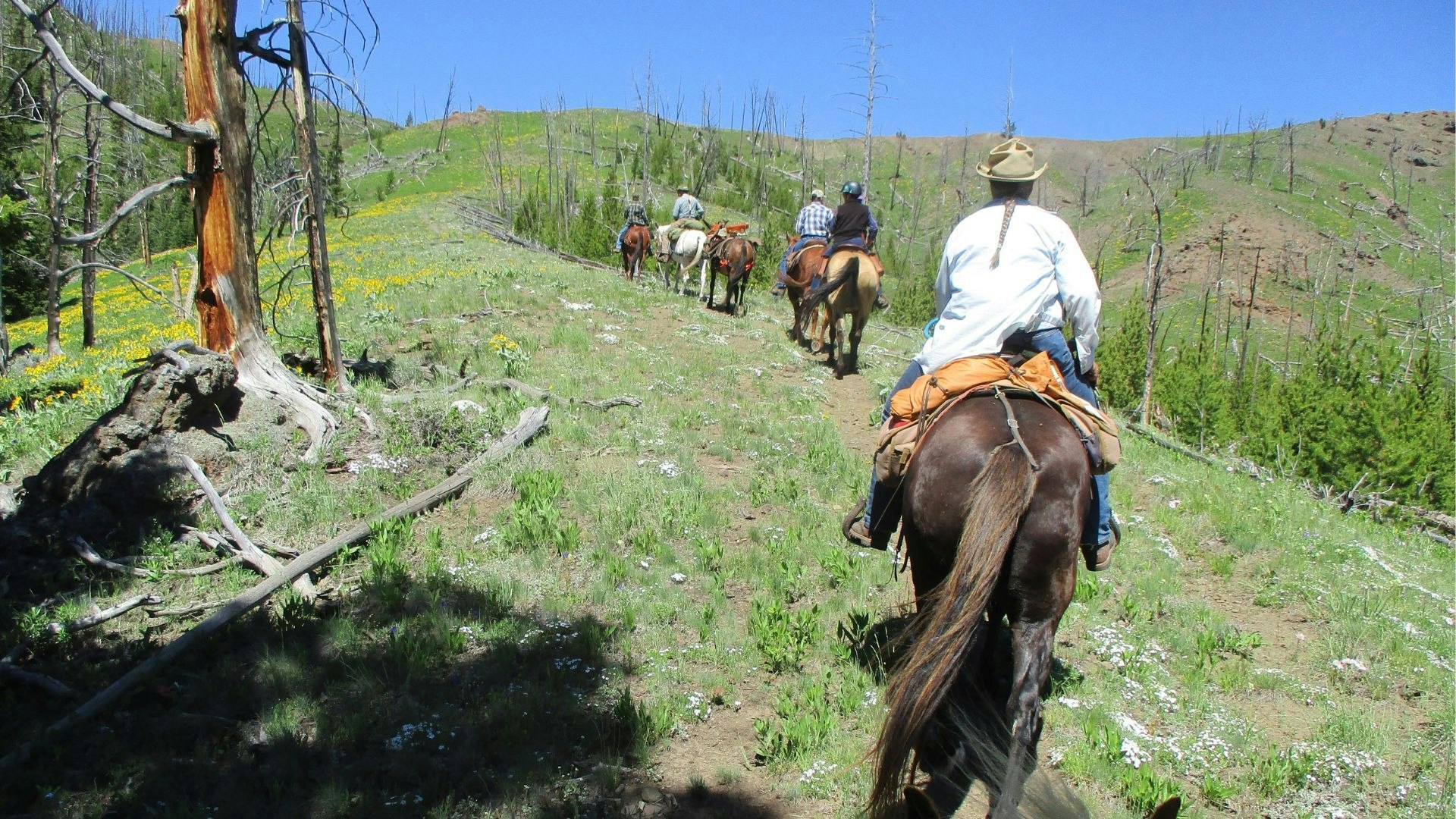It used to be that Howard Sanders spent his free time in the wilderness of the Absaroka Range on foot hiking the trails that he had grown to love.
“Then you reach a certain age when traveling on foot isn’t as much fun as it used to be,” Sanders told Cowboy State Daily.
When Sanders was introduced to his first Tennessee walking horse, he was hooked — and spent countless hours exploring trails in the Shoshone National Forest on horseback.
“I had a friend that was part of the Shoshone Backcountry Horsemen, and I went on a trail cleaning day with them and realized that I wanted to be part of that,” said Sanders, who lives in Powell. “This was my opportunity to help keep the trails cleaned up and keep the backcountry open, for not only us, but the public.”

How It Began
Formed in 1993, members of the local Foxtrotter Club decided they wanted to expand their scope, and give back to the land they love.
“They started Shoshone Backcountry Horsemen to get more involved with keeping the backcountry open and make it not just a riding club, but a service organization,” said Sanders, who joined the group in 2007.
Now the 501(c)3 nonprofit group, which boasts 85 members, is one of seven chapters in Wyoming and part of the larger Backcountry Horsemen of America organization.
“We were established to perpetuate the common-sense use and enjoyment of recreational stock used in our nation’s backcountry roadless areas, wilderness areas and other public lands,” said Sanders.
But, he pointed out, you don’t have to own your own horses to be a member of the Park County-based group. A love for public lands and a $40 annual membership fee is all that is required.
“We have several members that don’t ride,” Sanders said. “Maybe they’re past the age where it’s not any fun anymore. But they still help out when we do work at trailheads.”
Maintaining Trails For Everyone
Over the last 30 years, the Shoshone Backcountry Horsemen have constructed and/or maintained 20 trailheads in the Shoshone National Forest, from Elk Fork and Eagle Creek on the North Fork of the Shoshone to Pilot Creek and North Crandall off the Chief Joseph Highway to trails off the Wood River near Meeteetse.
“We do a lot of contract work for the Forest Service, opening trails and things like that, trail clearing,” said member Marty Morris. “There’s a lot of dead timber along the trails of the forest.”
Morris explained that in recent years, the group clears an average of more than 100 miles of trails per year, a number Sanders agrees with.
“It’s pretty safe to say that we’ve cleared 4,500-plus miles of trail since 1993,” said Sanders.
In addition to trail maintenance, the members of the group have built corrals and other maintenance work at trailheads in the Shoshone National Forest, said Morris, adding that they’ve expanded their volunteerism into surrounding public lands.
“We’ve been doing some work over the Bighorns, too, and then also doing some work for the BLM,” he said.



Preparing The Next Generation
But the Shoshone Backcountry Horsemen do more than just organize trail maintenance outings. Each year, volunteers conduct youth clinics teaching young people real-world horsemanship skills.
“We teach the public how to pack horses and mules and how to use the national forest in a safe manner without doing a bunch of damage to the area,” said Morris. “Low-impact camping and that kind of stuff.”
The group’s annual youth horsemanship clinic was originally scheduled for April 1, but was canceled because of the snowy conditions.
But member Cathy Ringler said another clinic will take place this year at the Boot and Bottle Club in Cody, which will expose youth to situations they might encounter while on horseback in the forest.
“The obstacles that are at the Boot and Bottle Club, there’s about 15, and that will give the kids the chance to desensitize their horses and work with obstacles that they might find out on the trail,” said Ringler.
Other segments of the clinic include a course on trail ethics and courtesy, as well as a “liberty” demonstration, in which a trainer communicates with his horse without ropes or harnesses.
“The horse is completely at liberty, and you’re working with them completely at liberty,” said Ringler. “That really builds communication in a huge way, so that you’re safer all around when you’re working with your horse.”
Ringler said past clinics have been hugely successful.
“They look forward to the small group instruction and the games, and just the chance to ride the horses with friends and learn new things,” she said.
Sanders explained that the Backcountry Horsemen also hosts an annual Kids In the Woods day in conjunction with the Forest Service and Wyoming Game and Fish Department.
“We’ll have up to a hundred kids that get treated to all different kinds of things,” he said, including identifying various plants, bear safety, and learning general camp skills.
“We always provide lunch for them, so they get an opportunity to cook over an open campfire,” said Sanders, “and for a lot of those kids, that’s the first time they’ve ever gotten to do that.”





